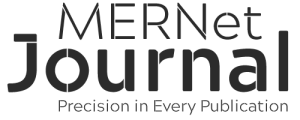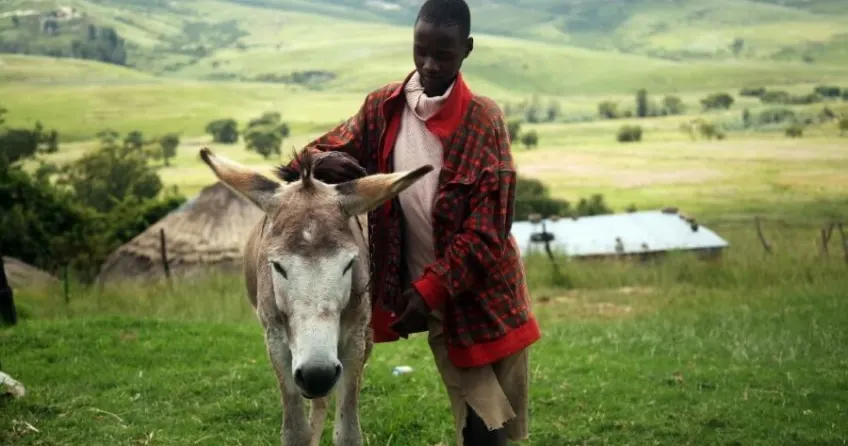Deep Roots, Big Impact
Our origins date back to 1929, when the National Research Council of Canada launched the Canadian Journal of Research. Today, Canadian Science Publishing has grown to become Canada’s largest publisher of international scientific journals. Learn about our history.
We publish 22 journals that cover the spectrum of natural and physical sciences and engineering, including three open access journals that are interdisciplinary and multidisciplinary. Learn more about our journals. As a mission-driven organization, we are dedicated to meeting the needs of the global research community. We are proudly affiliated with over 25 Canadian and international scientific societies and associations. Learn more about our partnerships.
We help researchers enhance the rigour and relevance of their research by making it easy to find, trust and use. We believe that scientific knowledge is powerful. Through our partnerships and agreements, we remove the barriers to vital research making it sustainable and accessible to anyone. Empowering everyone with science.
Our commitments Open Science future
CSP believes that the future is open. We are committed to becoming a premiere open access publisher and champion for open science. We strive to make high-quality, peer-reviewed scientific knowledge discoverable and accessible for everyone.
We are committed to actively removing barriers to build equitable, diverse, inclusive, and accessible participation in research publishing and publications. It’s clear to us that social justice isn’t just what’s right, but also what’s necessary for a full understanding of our world and its science. We pledge to do the work to change culture, policies, and practices within our workforce, our journals, and in the wider research community.
Sustainability
CSP is committed to developing sustainable practices and to act as champions of the SDGs during and beyond the Decade of Action (2020-2030). We acknowledge our important role in increasing awareness and understanding of sustainability issues and will strive to adopt sustainable business practices to address the climate crisis.
CSP is built on a foundation of community
Our People
Abstract
In consensus-based large scale group decision making (LSGDM) problems, some experts often exhibit adverse selection behavior due to asymmetry in information availability. This may lead to results deviating from the optimum, weakening decision making fairness and reducing consensus efficiency. For this reason, this paper proposes a large group consensus decision making method based on managing adverse selection behavior in an asymmetric information environment. Firstly, the directed Louvain algorithm is introduced to achieve the decision making subgroup division based on the directed social network. On this basis, considering the different qualifications and research fields of experts, a new weight allocation method is proposed based on the authority of experts. Next, focusing on the consensus-reaching process, a mechanism for identifying and managing adverse selection behaviors is proposed. A hierarchical recognition framework is designed for behavior identification, incorporating behavioral patterns and underlying motivations. A multidimensional dynamic adjustment strategy based on weight and preference is introduced for behavior management, then a comprehensive large-group consensus decision making method based on adverse selection behavior management is developed. Finally, the feasibility and effectiveness of the proposed method are verified using case studies and parameter discussions.
Introduction
However, despite the significant progress made in research on decision making under an asymmetric information environment, the existing framework is still insufficient.
- (1)Most current research focuses on the behavior analysis and model construction of individual DMs, ignoring the unique performance and potential of GDM in this complex environment (Chen et al., 2024, Gim and Jang, 2023, Lin et al., 2023, Zissis et al., 2020, Xue et al., 2020). GDM involves the interaction and cooperation of multiple DMs and contains rich social psychological processes, which are particularly complex and changeable under the condition of information asymmetry. The pioneering work of Brodbeck et al. (2007) provided a new perspective for understanding the impact of distributed knowledge conditions, particularly the influence of information asymmetry on the quality of GDM. They highlighted that when information asymmetry is handled appropriately, GDM can transcend the limitations of individual versus simple voting and achieve better decision making through the integration of unshared information. However, the exploration of this area is still in its early stages. The dynamic changes in the GDM process, such as how information differences stimulate or inhibit communication among members, the interaction patterns among members with different information levels, and how these interactions affect the quality of decision making, all lack in-depth theoretical discussion and systematic empirical verification.
- (2)Information asymmetry in GDM exists not only between DMs and those affected by the decisions but also among members within the group. Existing research often overlooks the impact of information asymmetry within the group on the decision making process. For example, some members may possess more critical information than others, which may lead to information monopolies, power concentration, adverse selection behavior, and decision biases. To date, several group decision making studies have considered the behavior of decision making groups but focused only on behaviors such as cooperation and strategic manipulation. For example, based on the theoretically reasonable optimal feedback model, Wu et al. (2020) proposed a new framework to prevent manipulation in the consensus-reaching process of social network group decision making so that experts with inconsistent opinions could strike a balance between group consensus and adjustment cost, improve the willingness of experts to adopt recommendations and achieve consensus. Li et al. (2021) proposed a method to identify and manage non-cooperative behaviors in an interactive network environment like WeChat. Xiong et al. (2023a) developed a large-scale consensus model based on a clustering method to manage non-cooperative behavior using DMs’ historical preference data. This method will better detect DMs with three definitions of non-cooperative behavior through preference adjustment, and punishment strategies will be more effective. Wu et al. (2023) applied the intuitionistic fuzzy C-means clustering method to cluster DMs and subsequently proposed a non-cooperative behavior identification and management approach based on intuitionistic fuzzy sets. This method has contributed to developing open-pit mine slope stability research and risk assessment. Du et al. (2020) introduced a hybrid consensus reaching model for managing non-cooperative behavior, combining independent consensus models with traditional ones. Gong et al. (2024) proposed a maximal fairness consensus model based on the individual’s sense of preventing manipulation to prevent the sense of manipulation and unfairness generated by DMs from destroying the consensus. Wang et al. (2025) proposed a segmented cost consensus mechanism based on a trust relationship to minimize the cost to achieve target classification in multi-criteria sorting through a preference strategy manipulation model and applied it to risk level optimization and resource allocation in supply chain risk management. Sun et al. (2025) introduced a self-esteem-driven feedback mechanism specifically designed to analyze the power structure and prevent strategic manipulation behaviors in group decision making in social networks. In fact, adverse selection is a typical group behavior in social network-based decision-making but differs from non-cooperative behavior and strategic manipulation. The core of adverse selection lies in information asymmetry, where differences in access to or quality of information enable certain individuals to exploit their informational advantage, thereby impacting decision fairness. In contrast, non-cooperative behavior typically stems from individual stances or conflicts of interest, leading participants to refuse preference adjustments and resist integration into the consensus process (Zhang et al., 2018). Strategic behavior, on the other hand, involves individuals employing game-theoretic thinking to deliberately manipulate their choices within known rules to influence the final decision (Xiong et al., 2023b). However, there is currently little research considering the effect of adverse selection on consensus decision making in large scale groups under asymmetric information environments, so this is an important direction of theoretical and practical significance.
Based on the above analysis, this paper focuses on the following three aspects:
- (1)Aiming at the shortcomings of traditional weight calculation entirely relying on social networks, we propose an expert weight allocation method based on expert authority and social network relationships. On this basis, the directed Louvain algorithm divides the subgroups of the directed social network and calculates the subgroup weights.
- (2)According to the influence of asymmetric information on LSGDM and the characteristics of social networks, we design a reasonable identification and management mechanism to address potential adverse selection behavior that may exist in the consensus-reaching process.
- (3)The consensus model of LSGDM in social networks considering adverse selection under a complete asymmetric information environment will be applied to specific cases to discuss its feasibility.
Need Help
Recommended Articles
AbstractIn recent years, Setaria viridis (L.) P. Beauv. has increased its popularity
Global research on using plastic waste in asphalt roads highlights
Phenological growth stages according to the BBCH-scale
Abstract In recent years, Setaria viridis (L.) P. Beauv. has increased its
Phenological growth stages according to the BBCH-scale
Abstract In recent years, Setaria viridis (L.) P. Beauv. has increased its
Phenological growth stages according to the BBCH-scale
Abstract In recent years, Setaria viridis (L.) P. Beauv. has increased its







